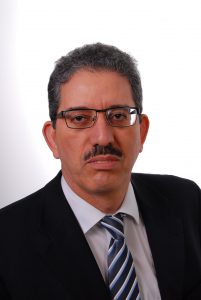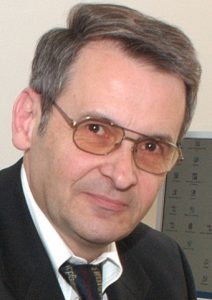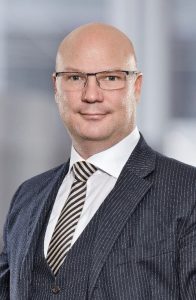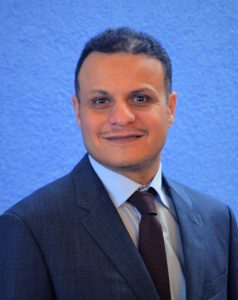Steinbeis experts develop a process for selectively adding coatings using extremely fine powder particles
Mechanical engineering is currently shaped by two major trends: achieving productivity enhancements and improving the energy efficiency and ecological efficiency of products. For manufacturers, these trends require machines and plant with a long service life. But at the same time, there is no getting around the fact that running machinery results in wear and tear, placing a great deal of stress on component integrity. When metal parts become worn, they either have to be replaced or, as is often the case, a more economical method is needed for reworking and reconditioning components. It is common to re-process metal components by using thermal spraying or welding methods. This involves reconstructing worn parts and then machining and finishing them. As things currently stand, there are number of serious drawbacks with the processes used to do this. Intelligent Functional Materials, Welding and Joining Techniques, Implementation (the Steinbeis Innovation Center) has now developed a process technology that does away with some of the main headaches faced with such processes.
One of the biggest problems with the processes used at the moment to add metallic layers is that they subject the parts that need to be reconditioned to extremely high thermal stress. This can result in cracks forming and structural changes, or in components losing their original shape. When this happens, parts have to be subjected to complex thermal reprocessing or post-treated mechanically. Aside from the negative impact this has on materials, certain difficulties arise when using extremely fine coating particles, such as powder agglomeration, which hampers the distribution of coating powders during the coating process. It is important that powder particles are kept in a loose state and if materials do agglomerate, they have to be broken down to allow the powder to be transported into the right position when applied by gas.
This was the challenge faced in a research project at the Dresden-based Steinbeis Innovation Center for Intelligent Functional Materials, Welding and Joining Techniques, Implementation. The aim of the project was to develop a reliable process for using minute powder structures (particle size ≤ 30µm) to selectively add coatings to metal component surfaces and thus produce parts strong enough to withstand stress. These parts should also be true to the required component geometry. The project team conducting the experiments decided that plasma spraying would be the most appropriate process for adding the extremely fine powder structures. This technique is suitable for a variety of component sizes and materials, from metals to high-melting-point ceramics.
THE PROCESS IN PHYSICAL TERMS
The physical principles underlying the process used for the project involve melting a powder-based spray mixture until it forms a thermal plasma, which is then catapulted onto the prepared material surface. An external powder conveyor uses a carrier gas to transport the small powder particles into a plasma beam in and around a gas nozzle. This plasma beam, which is created by a high-current electric arc, is driven between an electrode and the nozzle by a processing gas, most of which is ionized; it emerges from the injection nozzle at a high speed due to thermal expansion of the gas (argon). These processing principles make it possible to achieve the required technical parameters and functions of the coating system prototype. This will be important when adding thin metallic layers, which will need to be strong enough to cope with material stresses.

Microlayers produced by the new coating system; plasma powder spraying with varying process parameters
THE TECHNICAL EQUIPMENT
Naturally, the research project didn’t just look at the underlying concept for the innovative process. Working in collaboration with their industrial partner WM Spezialgeräteentwicklung GmbH, which makes specialist mechanical devices, the Steinbeis experts also developed the technology for adding extremely fine layers of powder structures to component surfaces. Building on the identified material, technical, and structural principles of the proposed solution, an innovative plasma spray gun was developed (electrical burner rating up to 150 A) complete with a powder-conveying device and a control and guidance system for coating microstructures, not only when adding surfaces to new parts but also for repairing worn surfaces. The project team checked the coating process and the prototype in detail by conducting a variety of simulations and experiments. Aside from gaining a fundamental understanding of the process, the work carried out by the team also makes it possible to plan the technology and design aspects of an entire error-free coating system and determine the thermal loads that are placed on components. As a result of the new process technology, the team succeeded in producing suitable thin coatings for dealing with wear and corrosion. These coatings are entirely fit for purpose, not only because they can be used to produce new functional surfaces on components, but also because they help repair worn surfaces on parts.
PLASMA SPRAYING IN PRODUCTION
Explaining the different stages of the plasma spraying process, Associate Professor Dr.-Ing. habil. Khaled Alaluss, co-director of the Steinbeis Innovation Center, says: “The sprayed particles re-form on the substrate and cool down within milliseconds. The resulting particle morphology is mainly dictated by the diameter, temperature, and speed – as well as the rate of cooling.” The viscosity of the melt, the surface tension, and the heat transfer coefficient between the particles and the substrate have an influence on the flow of particles when they hit the surface. The morphology of the resulting splat thus has a crucial impact on layer properties, adhesion, and porosity. Layer adhesion is important for characterization of the layer properties. It is strongly influenced by the chemical, physical, and metallurgical interplay between the spray particles and the substrate. It is these factors that help define and optimize the technical parameters of the process and establish the required conditions for producing error-free plasma spray layers. The result when the parameters are just right: coatings offering the required adhesion, hardness, and precision, as well as extremely low coating porosity. The new powder-conveying device delivered good coating rates and good bulk density without powder agglomeration.
The coatings produced for the research project were uniform in terms of layer geometry and also looked good in purely visual terms. The thickness at different points along the grain of the layers was also uniform and free from errors. The plasma-sprayed microlayers are thus suitable for achieving reproducible properties of a suitable quality. Overall, the project was a success for the team from start to finish, and the coating system can now progress from the prototype stage to practical application.
Technical parameters of the process
- Achievable coating thickness: 0.01-1.0 mm, depending on the defined process parameters
- Maximum conveyed volume of powder: 1.0-25 g/min depending on added mixture, gas flow, and the cross section of the injection nozzle (internal diameter)
Layer porosity depends on the material used: < 2 - Electric burner rating of the plasma spray gun: up to 150 A
Contact
 PD DR.-ING. HABIL. KHALED ALALUSS (author)
PD DR.-ING. HABIL. KHALED ALALUSS (author)
Director
Steinbeis Innovation Center for Intelligent Functional Materials, Welding and Joining Techniques, Implementation (Dresden)
 PROF. DR.-ING. GUNNAR BÜRKNER
PROF. DR.-ING. GUNNAR BÜRKNER
Director
Steinbeis Innovation Center for Intelligent Functional Materials, Welding and Joining Techniques, Implementation (Dresden)
 DR. JUR. LARS KULKE
DR. JUR. LARS KULKE
Director
Steinbeis Innovation Center for Intelligent Functional Materials, Welding and Joining Techniques, Implementation (Dresden)
 HAYDER AL-MASHHADANI
HAYDER AL-MASHHADANI
Project assistant
Steinbeis Innovation Center for Intelligent Functional Materials, Welding and Joining Techniques, Implementation (Dresden)
ALEXANDER PFAFF
Managing Director
SGE Spezialgeräteentwicklung GmbH (Pirna)

